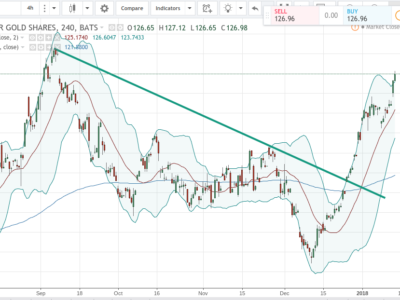Diving into Investing: 5 Tips for Beginners
Investing can be daunting for beginners with limited knowledge of the financial markets as well as capital to afford. While the basic premise of “buy low, sell high” has attracted many people over the past several decades, the actual dynamics of participating in any financial market remains more complex than it looks. Fortunately, you don’t have to be an Ivy League graduate or financial whiz to participate and profit from the financial markets. Here’s five essential tips every beginning investor should know.
Understand Fundamentals and Jargon
Being able to scan through financial reports and economic news and traverse your brokerage platform with ease can improve your investment returns over time. While many financial terms, like interest rates and premiums, encompass multiple markets, there are subtle differences in jargon, such as PIPs in Forex. Look for a glossary online or from books that list terms and their respective definitions.
Have Enough Runway
Having sufficient investment capital is important to weather the storms. There will be times when you incur a string of losses and even get margin called. You should have enough capital to bounce back and trade at optimal position sizes otherwise it will be more difficult to break even and eventually make a profit. While there are no minimal requirements on how much you should deposit on your account, have at least $2,000 to trade with. Trade only small position sizes and avoid maximizing your allowed account leverage so as not to get margin called when that said position goes against you. As a general rule of thumb, your position size should be small enough to weather 10 losses consequently without forcing you to lower your trade size or get margin called.
Record Your Trades
Keep a trade journal with you, whether it’s online or a traditional notebook. As your record grows, you’ll have a database from which to base your future trade positions on. You can pinpoint which technical indicators didn’t work, which candlestick patterns were most reliable, which time frames it’s best to open or close positions, and so forth. These data can be used to derive a lot of parameters for your strategy or approach. You can also start a financial blog or forum thread to make your records more engaging, enabling fellow investors to provide feedback on your trades.
Manage Risk
No investor has gone from zero to sixty without losing a few trades. But how did people like Warren Buffet and Steven Cohen manage to make billions? It’s through rigorous risk management measures that they execute masterfully in their portfolios. Learning how to manage risk, however, doesn’t come overnight. Most beginning investors find it difficult to close a losing trade, hoping that it will eventually go back to the price level they opened it and then some. Hope is not a good quality to practice when investing in any financial market. Logic and reasoning must always precede any other quality. Just as a homeowner secures his/her investment with a home warranty, investors should also secure their portfolio with stop loss measures.
Have a Pre- and Post-Trade Routine
What you do before and after you invest is as important as what you do during your active trade hours. Eating right and sleeping enough hours ensures that you stay mentally sharp to absorb and analyze the financial data that come your way. Whatever routine works for you, whether it’s taking a jog early morning before opening charts or going out for a movie with friends after a busy day of checking price quotes, it’s good to have a routine so that you can relieve stress and calm your mind.
Investing your funds properly should be treated as a business. It takes time to grow your capital and reinvest it so that it makes more money over time. Use the five tips above to establish solid footing in the world of investing, whether it’s in stocks, bonds, currencies, or cryptocurrencies.














